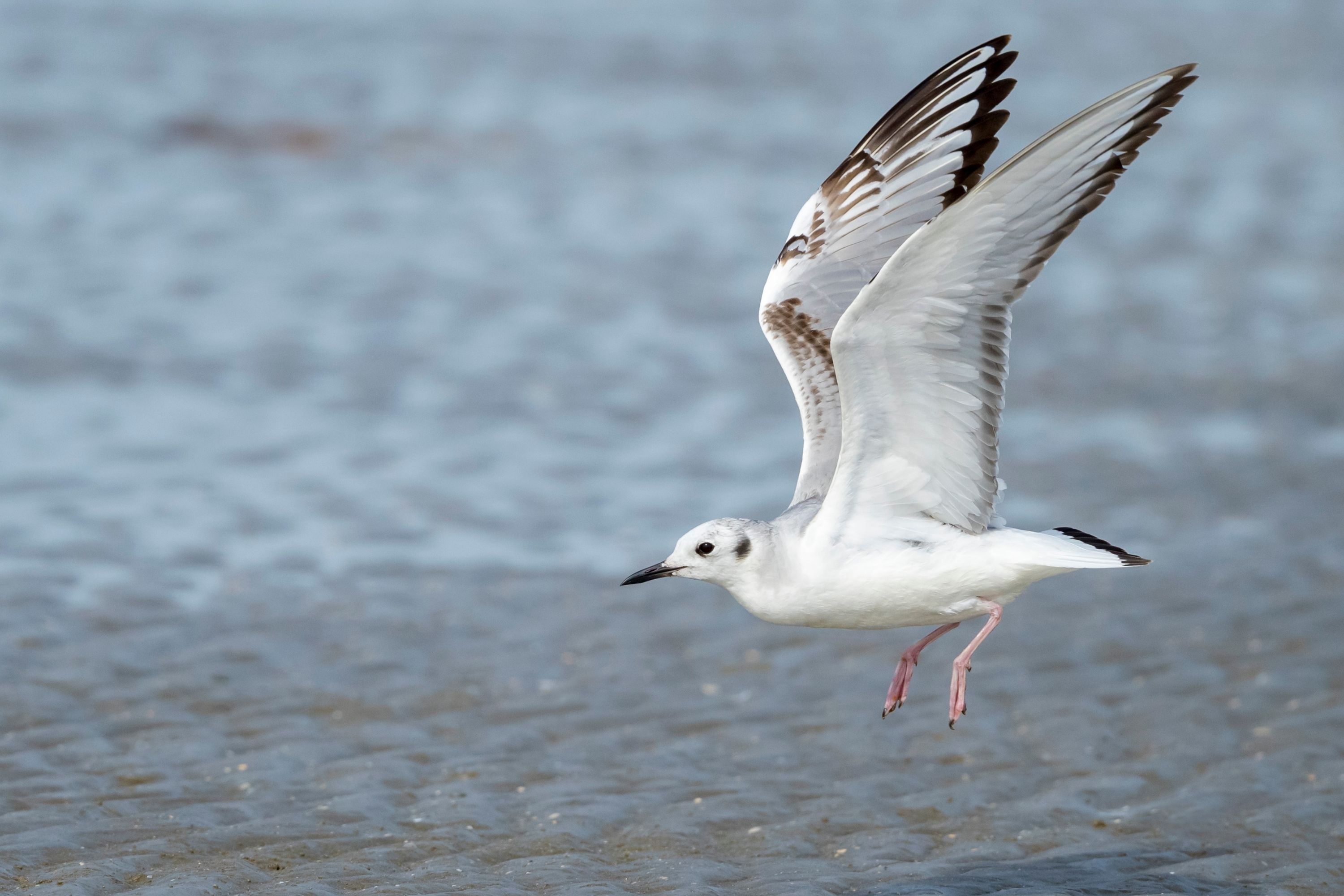Bonaparte's gull
(Chroicocephalus philadelphia)

Description
Bonaparte's gull (Chroicocephalus philadelphia) is a member of the gull family Laridae found mainly in northern North America. At 28 to 38 cm (11 to 15 in) in length, it is one of the smallest species of gull. Its plumage is mainly white with grey upperparts. During breeding season, Bonaparte's gull gains a slate-grey hood. The sexes are similar in appearance. When George Ord first described Bonaparte's gull in 1815, he gave it the scientific name Sterna philadelphia, assigning it to the genus now used for medium-sized terns. Most later taxonomists assigned it to the genus Larus, a longtime catch-all for most of the gull species. Bonaparte's gull is among the smallest of the gull species; only little gull and Saunders's gull are smaller. Adults range from 28 to 38 cm (11 to 15 in) in length, with a wingspan of 76–84 cm (30–33 in) and a body mass of 180–225 g (6.3–7.9 oz). There is no difference in plumage or bare part colour between the sexes, though males tend to be heavier than females. Bonaparte's gull is smaller-bodied, smaller-headed, and smaller-billed than the other common hooded gulls of North America. The adult has grey upperparts and white underparts; its wingtips are black above and pale below. In breeding plumage, it has a slaty black hood, which it loses in non-breeding plumage. Its short, thin bill is black, and its legs are orangish-red. First year Bonaparte's gulls have the same plumage in winter and summer, but the summer plumage is paler due to wear. Fewer than 5 percent of Bonaparte's gulls acquire a dark hood in their first summer, and on those that do, the hood is duller than on breeding adults. Bonaparte's gull breeds in boreal forest across southern Alaska and much of interior western Canada, as far east as central Quebec and south to within 320 km (200 mi) of the United States/Canada border. It avoids dense stands of conifers, instead choosing more open areas, such as the treed edges of bogs, fens, marshes, ponds, or islands. It typically nests within 60 m (200 ft) of open water. It winters along the coasts of North America, and in the Great Lakes. It is a rare vagrant to western Europe and the Azores, where it generally associates with black-headed gulls. In 2017 a breeding pair was spotted on Iceland. They are migratory and most move east or west to coastal waters, also the Great Lakes. They are graceful in flight, more like terns.
Taxonomic tree:







